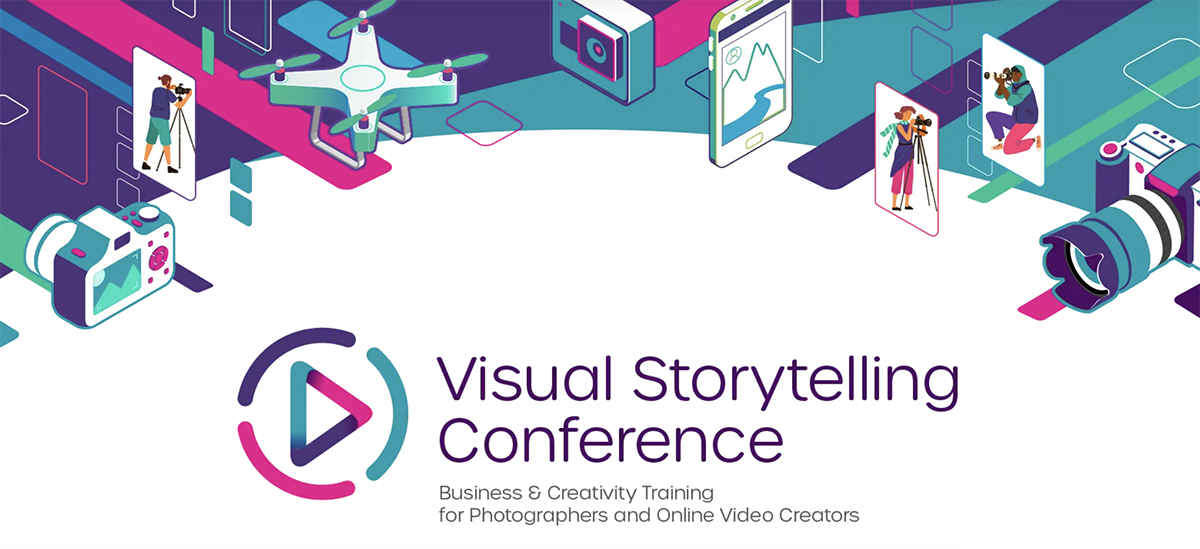
TL;DR
- Video Learning Lab host and founder of Sundance Media Group Douglas Spotted Eagle shares best practices for creating effective video for social media marketing.
- Social video should be shot vertically, in HD, with two or more camera angles.
- Audio quality is crucial, even for text-driven content. Try to fix it in post at your peril.
Watch the video above for more detailed insights and practical examples. Learn more at NAB Show New York’s Visual Storytelling Conference.
Most marketers are familiar with the seven-step funnel model of advertising, but how does it apply to video marketing? Or more specifically, how do you go about creating an effective video campaign for your brand? What specific steps are involved?
This tutorial from FMC offers a step-by-step guide to planning your video strategy.
Set Your Goals and Make a Plan
Questions to ask (this applies whether you’re working for yourself or for a client):
- What are we trying to achieve? Are we selling a concept or a specific product?
- What is your target audience or demographic?
- What platforms will you use to deliver the content?
- How will the content be viewed? Is audio an important component?
Spotted Eagle also urges viewers to consider why people buy products or accept new ideas. We don’t do it based on facts and figures. What does motivate can be broken down into five basic categories.
The Five Buying Motivations
- Ego (pride)
- Greed (AKA your paycheck)
- Fear (including FOMO)
- Love of family (more quality time)
- Comfort/survival (meeting our needs)
Note that none of these motivations are intended to be taken in the negative sense of the word.
Try to capture at least one motivation per message.Remember, people don’t buy features or specs. They want benefits. They address problems or accomplish goals. You don’t buy skis; you buy the thrill of hurtling down a beautiful mountain.
Watch Your Game Tape
If you have an existing library of content, this is a good point to review the analytics on those videos. But don’t just look at the graphs and the metrics; sync up the analytics view with your video, and it should become clear when the video resonated and when any problem spots emerge.
What types of content got good engagement? Where did the audience exit early; can you pinpoint why? What themes resonated in the past, or what types of presentation caused audiences to skip ahead or rewind the content? Did you include enough refocus moments, or were they too infrequent in past videos?
Learn from what worked and make a plan for how to skip what didn’t.
Gather Your Materials
Next, compile a list of assets and then take the time to aggregate them in a content library. Taking the time to get your logos, fonts, music, and other content elements and put them in a centralized location at this stage will pay dividends down the road.
This stage prevents delays and last-minute changes.
For example, you don’t want to plan to use a vertical logo — only to discover you only have, say, a horizontal, B&W version handy — and have to pivot or worse, pause, if you can help it.
Making the Content
You now know where you will distribute your video. Check the specs for each platform (hint: they’re not the same).
Before you press record, think through a production game plan, ensuring you get the shots you need to produce the right content for Insta or YouTube.
But how can you be sure you’ll optimize your video to be repurposed on multiple platforms?
Camera Settings
Here are some best practices:
- Record at 60 frames per second.
- Consider shooting with both a standard production camera and cell phone or tablet, or even two different cameras.
- Always shoot in HD or higher resolution (H.264 or H.265).
- Most H.265 systems also offer a 10-bit option
- Go for a vertical capture, even if you are shooting in full 1920 by 1080.
- Shoot at least two different angles OR crop the video in post to create different focal depths to keep the eye engaged.
Audio Is King
Humans are auditory creatures. You have to be sure to have good audio for your video because bad sound will cause abandonment rates that are higher than just about any other defect.
In order to accomplish that, it’s important to have a quality microphone set up. Spotted Eagle recommends the Audio Technica system 10 lavalier or the AT 2020. And it’s crucial that the speaker is close enough to the microphone to capture their voice and not just the room’s echoes.
It’s key to get it right and not plan to fix audio in post. After all, Spotted Eagle notes, “You cannot pull great audio out of poor audio, at best, you can make poor audio tolerable.”
Let There Be (Enough) Light
Proper lighting can make the difference between a professional-grade video and a poor-quality social spot. It’s important not to rely on ambient or overhead lighting.
But you don’t necessarily need an expensive kit or your own gaffer on set. Spotted Eagle says he often defaults to an $80 LED light for smaller productions.
Beyond the Video
It’s important not to neglect the text and metadata that accompanies your video content. The descriptor or caption (depending on the platform) is prime real estate.
Even if your video is text-driven, this is a good place to put important information and to drive engagement by including phone numbers, websites, addresses, links to the product, or other elements that may (or may not) be related to your video’s call to action.
And in post, add your watermarks! Logos or bugs are important branding elements, whether you’re talking about a product or a company.
Real Examples
If you want to see these tips in action or would like more clarity on what not to do, watch the video above or visit our Video Learning Lab to see Douglas Spotted Eagle run through some examples of what-to-do and also run through a couple “whiffs” that don’t resonate with viewers.

Develop your own storytelling skills Oct. 26 at NAB Show New York’s Visual Storytelling Conference.
